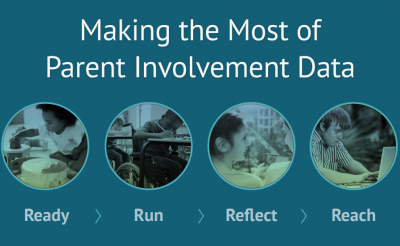
Resource Library
Guides. Briefs. Toolkits. Quick reference information. IDC and its partners created these data quality resources to help states better prepare to address their existing or emerging IDEA data quality needs. Use our search and filtering tools to navigate the library.
Resources 1 - 7 of 17
Format: Trainings
The Importance of High-Quality Data and the Role of Business RulesThe Importance of High-Quality Data and the Role of Business Rules instructional video provides a brief introduction to the concept of using business rules to promote and support the collection of high-quality data within state and local systems for IDEA Part B and C.
Format: Toolkits
Success Gaps Toolkit: Addressing Equity, Inclusion, and OpportunityThe Success Gaps Toolkit presents a process for using data and the Success Gap Rubric to identify root causes of gaps between groups of children in districts or schools. These success gaps occur when the education system is not meeting the needs of all groups of children and outcomes for some groups are different than outcomes for most groups. The toolkit, with its process and materials, provides a manageable and defined way for districts or schools to identify success gaps that are present and their root causes and then make a plan for addressing the gaps. The success gaps may be the graduation rate of students who are English learners compared to the rate of all other children, the out-of-school suspension rate of children who are Black compared to the rate of all other children, the identification of children who are Hispanic as children with specific learning disabilities compared to the identification of all other children, and other gaps.
Format: Guides and Briefs
State Determinations of Local Education Agency (LEA) PerformanceThis resource provides a summary of findings from 28 states’ publicly available LEA determinations processes. States can use this resource to learn more about the data elements, calculation methodologies, and determination category criteria these 28 states used for making LEA determinations. This information can be particularly valuable for those states considering revisions and updates to their own LEA determinations processes.
Format: Quick Reference
SPP/APR Indicator CardThe SPP/APR indicators measure child and family outcomes as well as compliance with the requirements of IDEA. This quick-reference resource from IDC includes a list and brief definition of all the Part B FFY 2020–2025 SPP/APR indicators (including the new Indicator 18!), as well as a list of file specifications associated with each of the seven IDEA 618 data collections, all in one convenient package. Print one out here or contact your IDC State Liaison for a laminated version you can carry along wherever you go.
Format: Toolkits
SEA Data Processes ToolkitUsing the SEA Data Processes Toolkit to document data processes for all 616 and 618 data collections will establish a well-managed process for data collection, validation, and submission. In collaboration with IDC State Liaisons, states can use the toolkit to create and maintain a culture of high-quality data and establish and support consistent practices that produce valid and reliable data, while building the capacity of state staff.
Format: Guides and Briefs
Measuring Significant Discrepancy: An Indicator B4 Technical Assistance GuideThe TA guide describes the methods a state might use to appropriately determine which of its districts has a significant discrepancy (including a significant discrepancy by race or ethnicity) in the rates of out-of-school suspensions and expulsions totaling greater than 10 days for children with disabilities.
Format: Toolkits
Making the Most of Parent Involvement Data: Improving Quality and Enhancing UnderstandingThis toolkit is designed to assist states as they plan for and carry out their efforts to collect, report, analyze, and use high-quality parent and family involvement data. It defines key concepts; offers guidance on ways to improve the quality of the collection, analysis, and use of parent and family involvement data; and provides resources and tools to help states in their efforts parent involvement data efforts.








